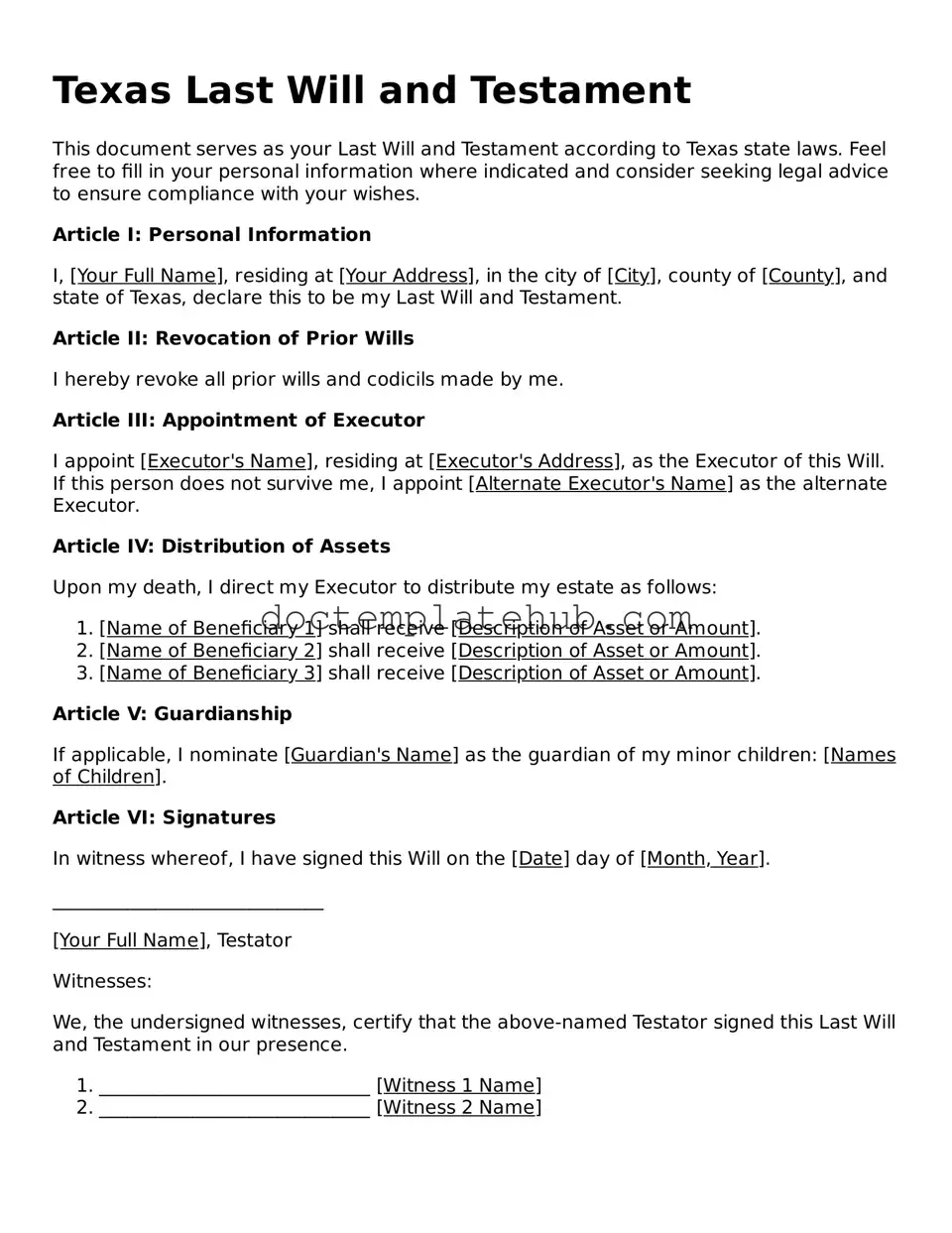What is a Texas Last Will and Testament?
A Texas Last Will and Testament is a legal document that outlines how a person's assets and affairs will be handled after their death. It allows individuals to specify who will inherit their property and appoint guardians for any minor children. This document ensures that a person's wishes are respected and followed when they pass away.
Do I need a lawyer to create a Last Will and Testament in Texas?
No, you do not need a lawyer to create a Last Will and Testament in Texas. Individuals can prepare their own wills using forms available online or through legal document services. However, consulting with a lawyer may be beneficial to ensure that the will meets all legal requirements and accurately reflects your wishes.
What are the requirements for a valid will in Texas?
In Texas, a valid will must be in writing, signed by the person making the will (the testator), and witnessed by at least two people who are at least 14 years old. The witnesses should not be beneficiaries of the will to avoid potential conflicts of interest. Additionally, the testator must be at least 18 years old and of sound mind when creating the will.
Can I change my will after it is created?
Yes, you can change your will at any time while you are alive. To make changes, you can either create a new will that revokes the previous one or add a codicil, which is an amendment to the existing will. It is important to follow the same legal requirements when making changes to ensure the validity of the will.
What happens if I die without a will in Texas?
If you die without a will in Texas, your assets will be distributed according to state intestacy laws. This means that the state will determine how your property is divided among your heirs, which may not align with your wishes. To avoid this situation, it is advisable to create a will to ensure your preferences are honored.
Can I include my funeral arrangements in my will?
Yes, you can include your funeral arrangements in your will. You may specify your preferences for burial or cremation, as well as any specific wishes regarding your memorial service. However, keep in mind that a will may not be read until after your funeral, so it may be helpful to communicate your wishes to family members or a trusted friend.
Is a handwritten will valid in Texas?
Yes, a handwritten will, also known as a holographic will, can be valid in Texas. The testator must write the entire will in their own handwriting and sign it. However, it is recommended to have witnesses sign the will to avoid potential disputes regarding its validity.
How can I ensure my will is carried out as I intended?
To ensure your will is carried out as intended, it is important to communicate your wishes to your executor and family members. Choose an executor you trust to manage your estate. Keep your will in a safe place and inform your executor where to find it. Regularly review and update your will as necessary to reflect any changes in your life circumstances.
